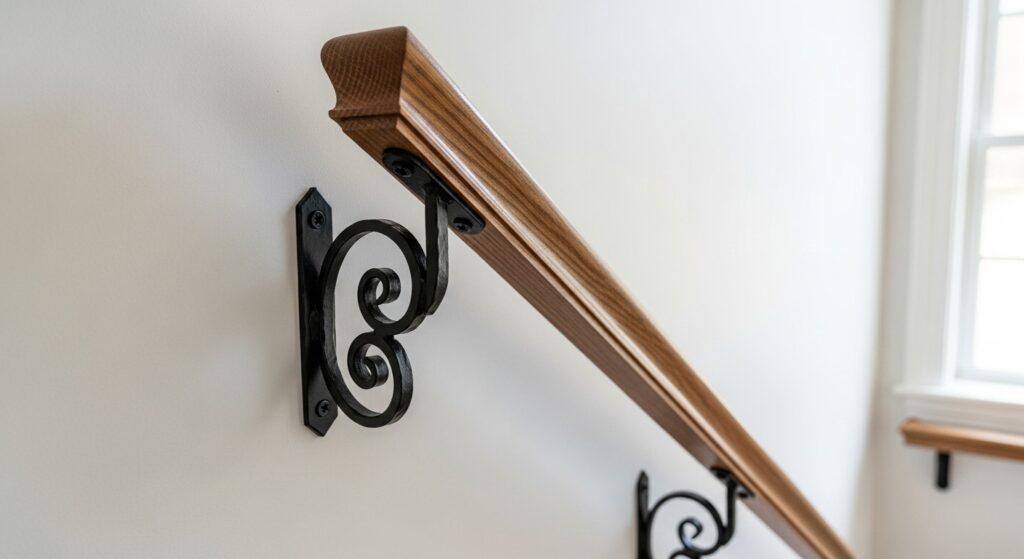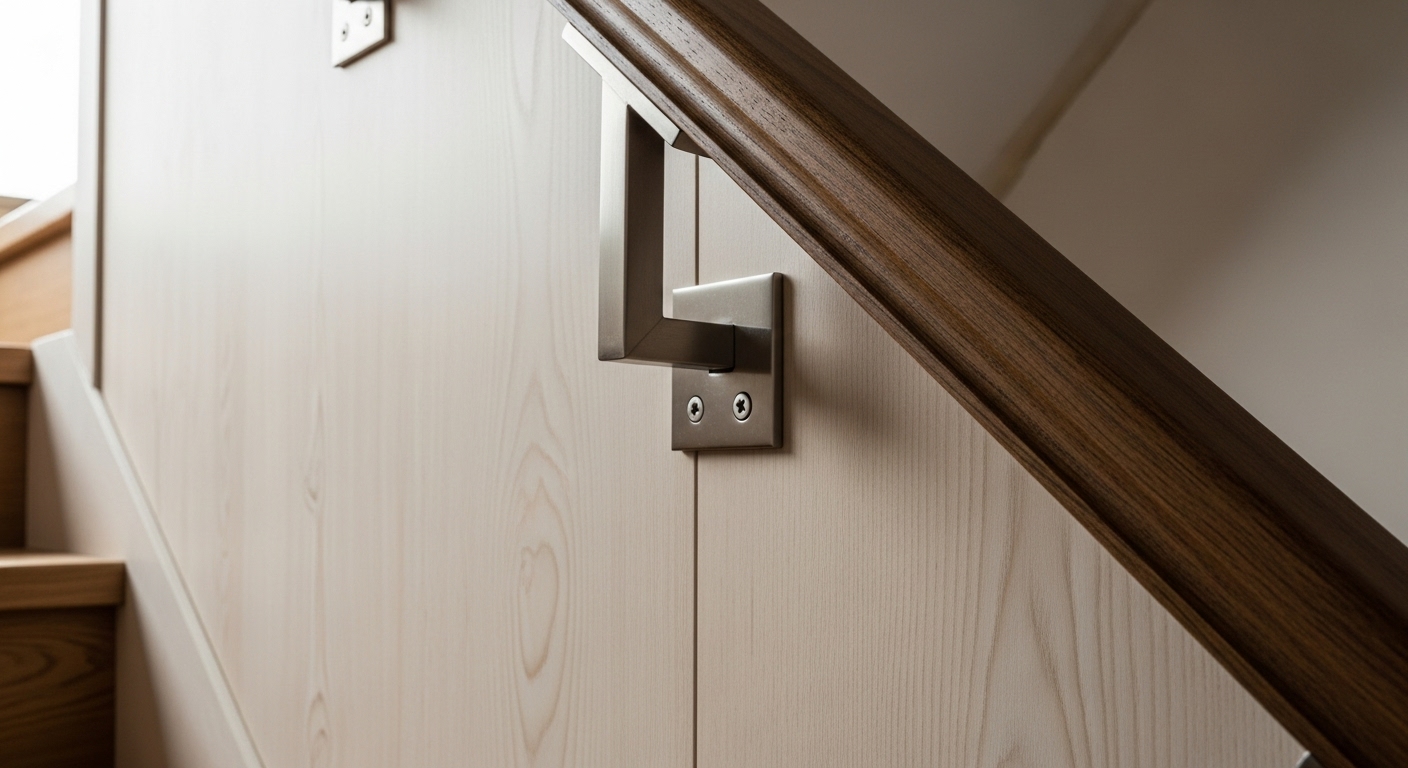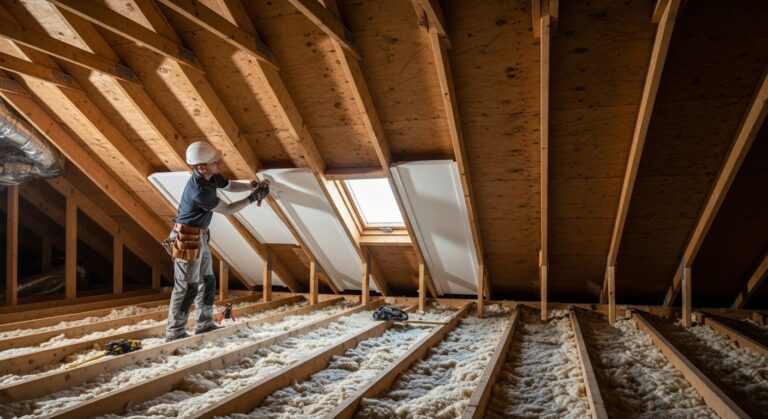The Only Guide You Need to Stair Handrail Brackets – Safety, Design Tips, and How to Install
When Sarah Martinez bought her 1960s split-level home in Denver, she never imagined that wobbly stair handrail brackets would become her biggest safety concern. After her elderly father nearly fell due to a loose handrail, she discovered what many homeowners learn the hard way: stair handrail brackets aren’t just decorative elements—they’re critical safety components that can prevent serious injuries.

Understanding Stair Handrail Brackets: More Than Meets the Eye
According to the National Safety Council, over 1 million Americans suffer stair-related injuries annually, with inadequate handrails contributing to 12% of these accidents. The humble stair handrail bracket serves as the crucial connection point between your handrail and the wall, bearing the full weight and force when someone grabs for support.
Modern handrail stair brackets come in three primary categories:
Wall-Mount Brackets
These traditional brackets attach directly to wall studs and support the handrail from underneath. Tom Chen, a contractor with 20 years of experience in San Francisco, shares: “I’ve seen wall-mount brackets hold up to 250 pounds of lateral force when properly installed into studs. The key is never relying on drywall anchors alone.”
End Brackets
These stair handrail bracket types secure the handrail at starting and ending points, often incorporating decorative elements while maintaining structural integrity.
Adjustable Brackets
Perfect for stairs with varying angles, these brackets can accommodate slopes between 30-45 degrees, making them ideal for custom installations.
The Lowes Factor: Why Big Box Stores Lead the Market
When researching Lowes stair handrail brackets, you’ll find they carry over 200 different bracket styles. This massive selection reflects a simple truth: one size definitely doesn’t fit all when it comes to handrail installations. Lowes data shows that adjustable brackets outsell fixed brackets 3:1, primarily because most homes have unique stair configurations.
Lisa Rodriguez, a Lowes installation specialist from Phoenix, notes: “Customers often underestimate the complexity of bracket selection. We see people return brackets 40% more often than other hardware because they didn’t account for wall thickness, handrail diameter, or local building codes.”
Installation Secrets from the Pros
The 36-Inch Rule
Building codes require stair handrail and brackets to be positioned 34-38 inches above the stair nosing. However, experienced installers like Michael Thompson from Atlanta recommend the “grandmother test”: “Install at a height that feels natural for the shortest regular user of the stairs.”
Bracket Spacing Mathematics
The International Residential Code mandates bracket spacing no greater than 8 feet apart, but professional installers follow the “6-foot rule” for optimal safety. This means a typical 12-step staircase requires minimum three brackets, with four being preferable.

Material Matters: Steel vs. Aluminum vs. Brass
Recent testing by the Architectural Hardware Institute reveals that steel brackets can handle 40% more stress than aluminum equivalents, while brass brackets offer superior corrosion resistance in humid climates. The choice often comes down to your specific environment and aesthetic preferences.
Real-World Performance Data:
- Steel brackets: 300+ lbs load capacity, 25+ year lifespan
- Aluminum brackets: 220 lbs load capacity, 15-20 year lifespan
- Brass brackets: 280 lbs load capacity, 30+ year lifespan in coastal areas
Customer Success Stories
Testimonial 1: “After installing heavy-duty steel stair handrail brackets in our colonial home, I noticed the difference immediately. The handrail feels rock-solid, and my insurance agent even mentioned it during our policy review.” – Robert Kim, Portland, Oregon
Testimonial 2: “The adjustable brackets from Lowes saved our renovation budget. Instead of custom-cutting handrails for our oddly-angled stairs, we could adjust the brackets to match perfectly.” – Jennifer Walsh, Nashville, Tennessee

Common Installation Mistakes That Cost Money
Professional installers report these frequent errors:
- Drywall-only mounting (causes 60% of bracket failures)
- Incorrect spacing (leads to code violations)
- Wrong bracket height (requires complete reinstallation)
- Mismatched bracket capacity to handrail weight
Frequently Asked Questions
Q: How much weight can stair handrail brackets support? A: Quality brackets properly installed into wall studs can support 200-300 pounds of lateral force. The actual capacity depends on bracket material, installation method, and wall construction.
Q: Can I install stair handrail brackets on concrete walls? A: Yes, but you’ll need concrete anchors rated for the bracket’s load capacity. Expansion bolts or chemical anchors work best for permanent installations.
Q: How often should I inspect my handrail brackets? A: Check brackets every six months for loose screws, cracks, or corrosion. Pay special attention after extreme weather or heavy use periods.
Q: Are expensive brackets worth the extra cost? A: Higher-quality brackets typically offer better materials, precise manufacturing tolerances, and longer warranties. For high-traffic stairs, the investment usually pays off in durability and safety.
Q: What tools do I need for bracket installation? A: Essential tools include a stud finder, level, drill, appropriate bits, measuring tape, and safety equipment. Professional installers also recommend a torque wrench for consistent screw tightening.
The Bottom Line: Safety Starts with Smart Bracket Selection
Choosing the right stair handrail bracket system isn’t about finding the cheapest option—it’s about protecting your family and guests from preventable accidents. Whether you’re shopping for Lowes stair handrail brackets or exploring specialty hardware stores, prioritize proper installation over quick fixes.
Remember Sarah from our opening story? After upgrading to professional-grade brackets and having them properly installed, she gained something priceless: peace of mind knowing her father could safely navigate her stairs.

Investment in quality stair handrail brackets isn’t an expense—it’s insurance against accidents that could cost far more than the price of proper hardware.


